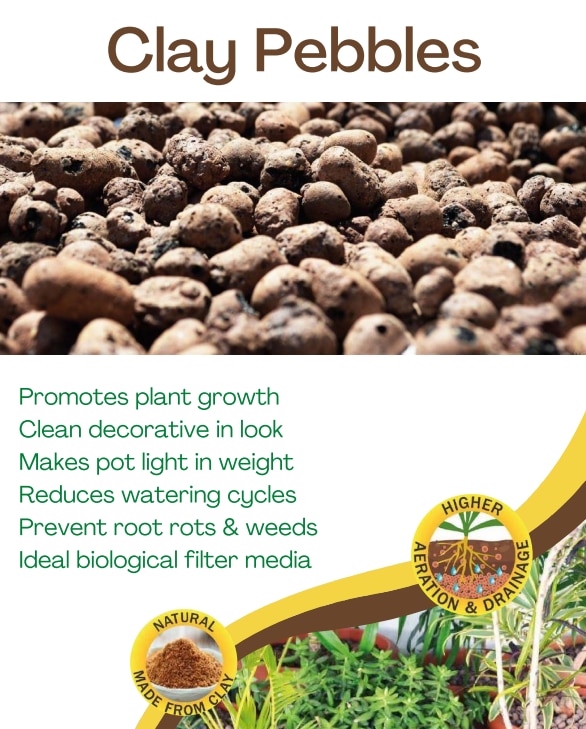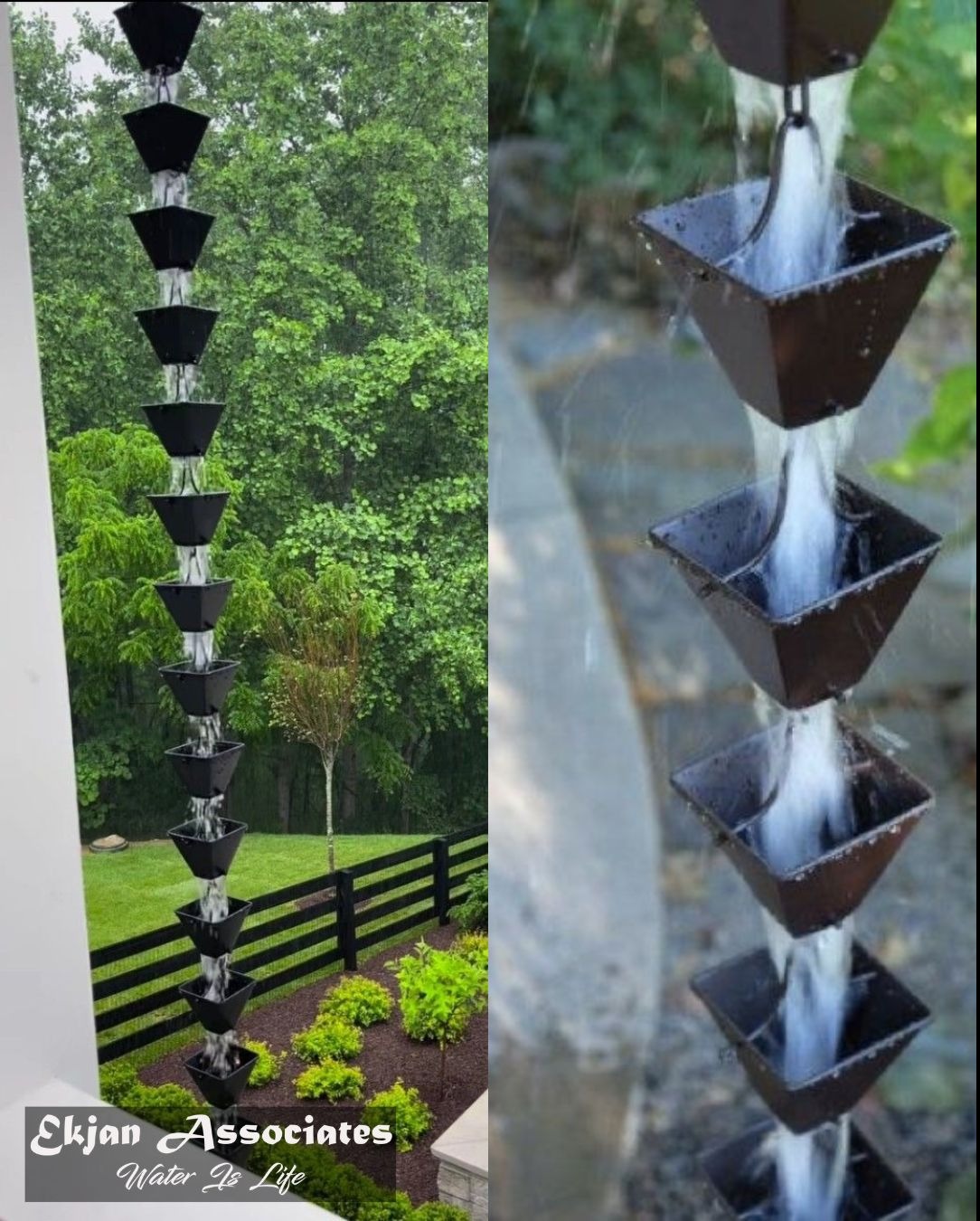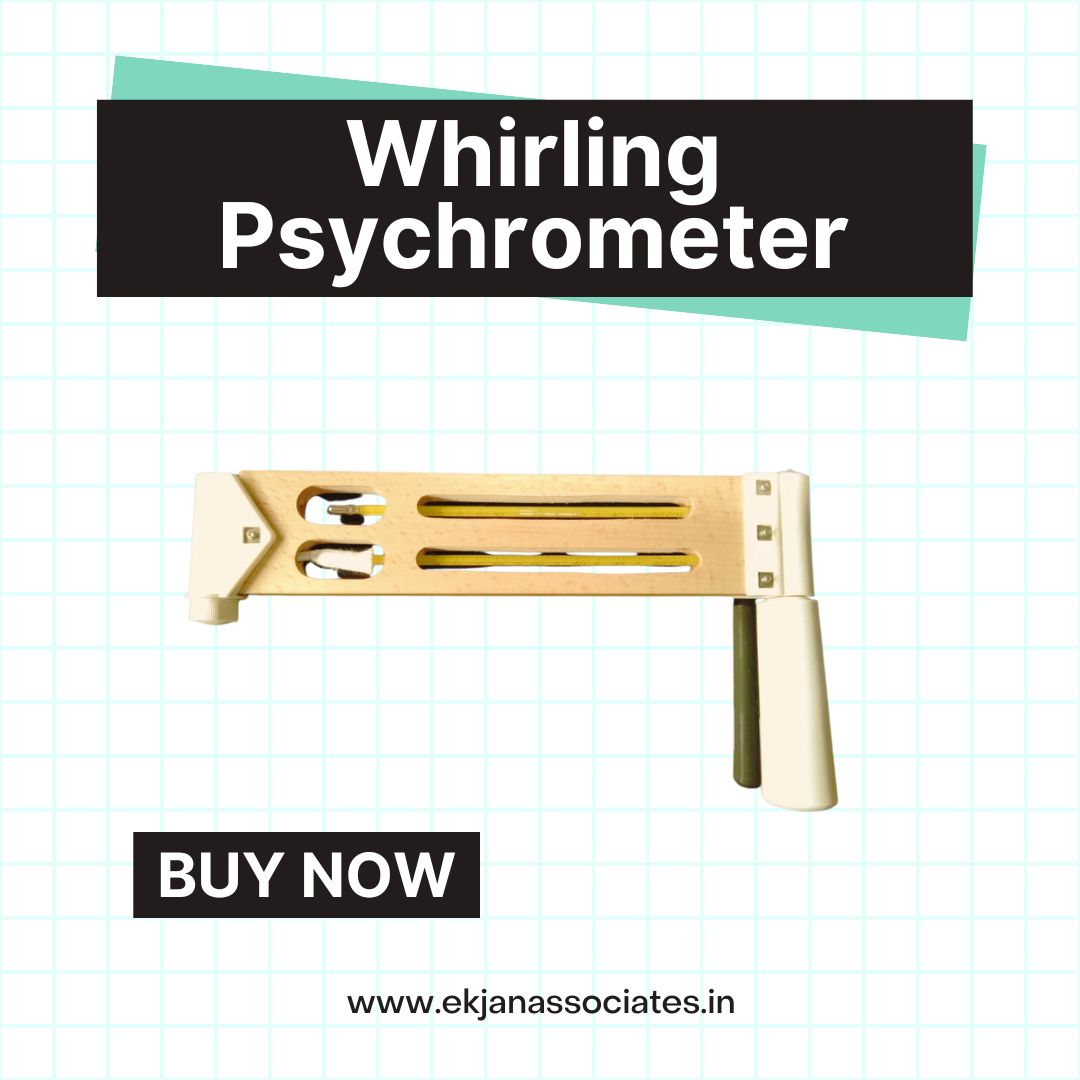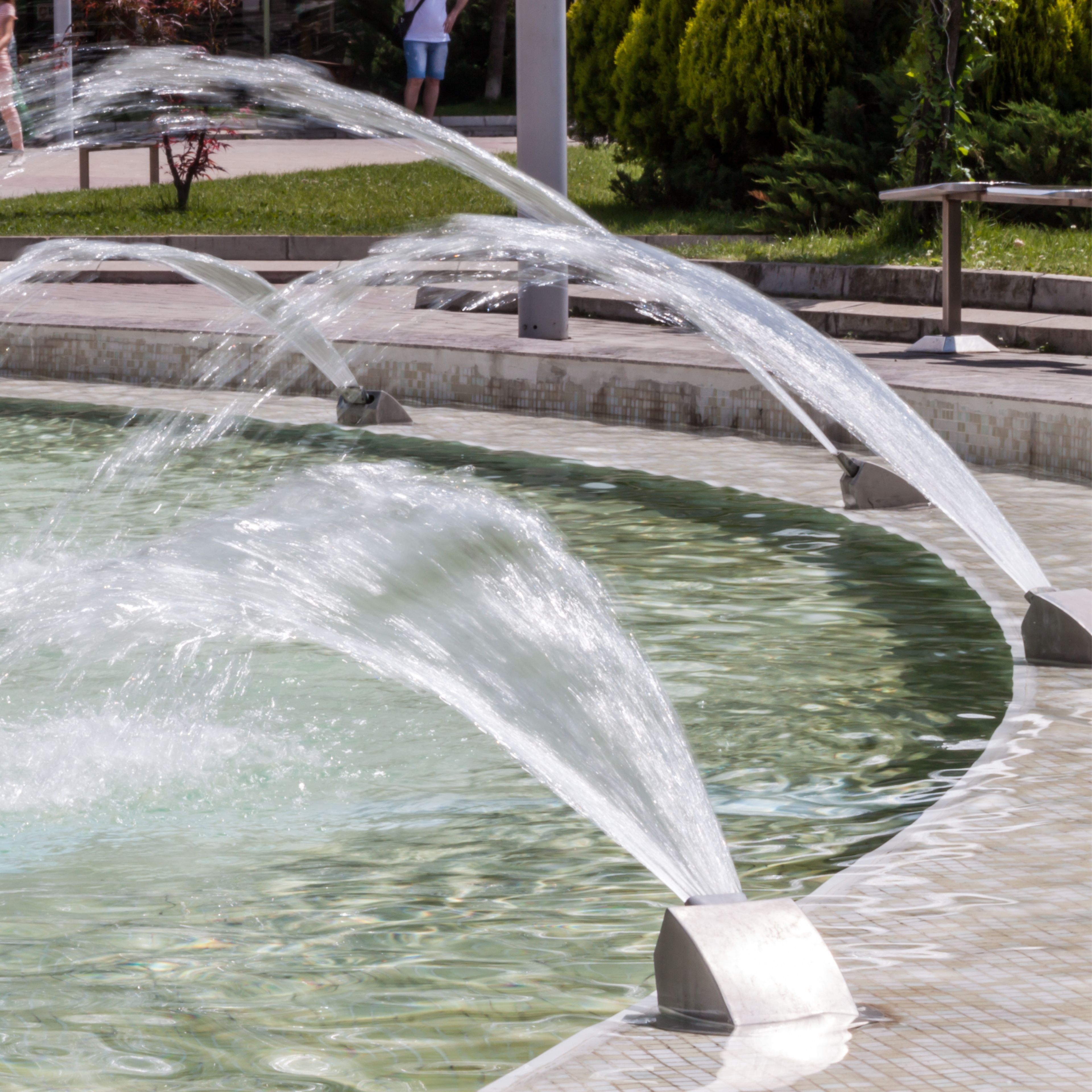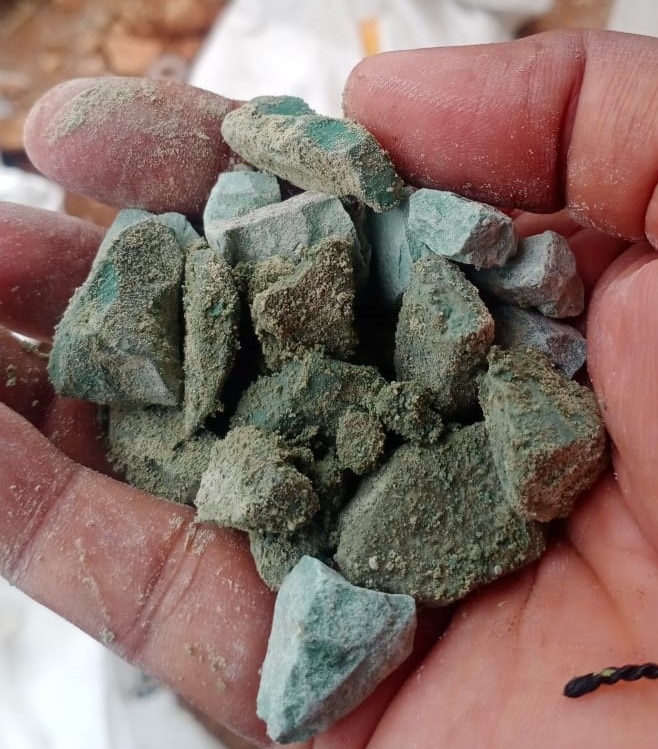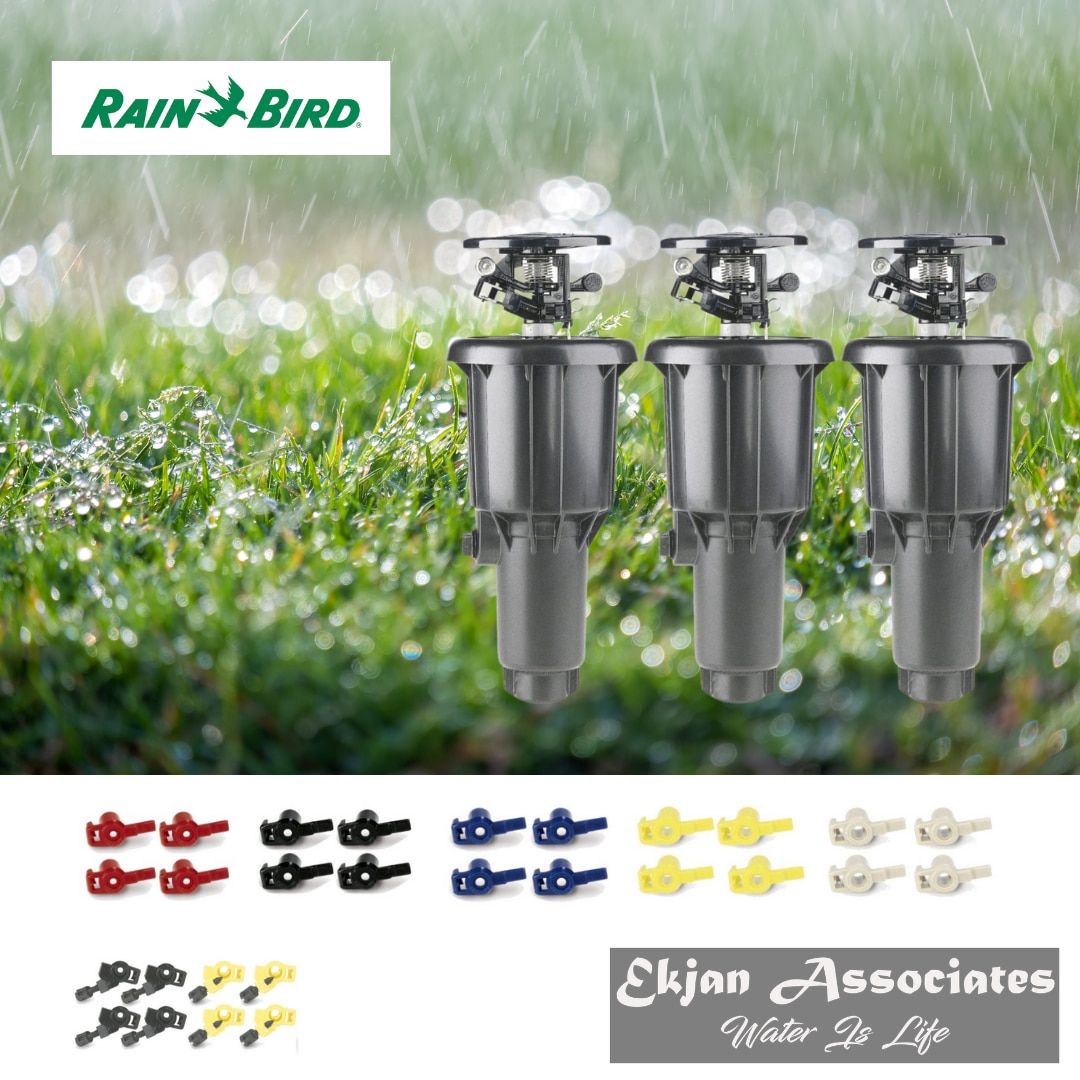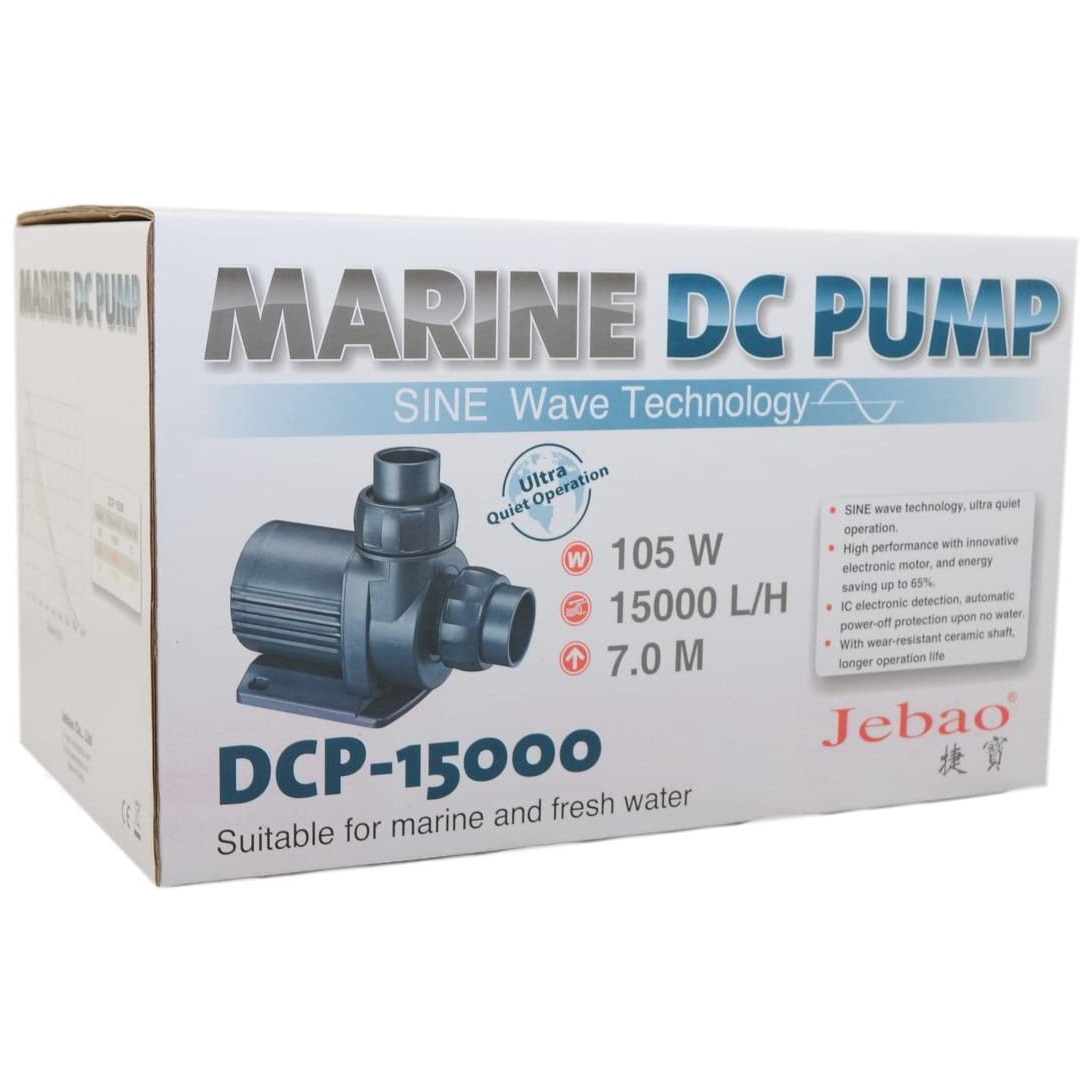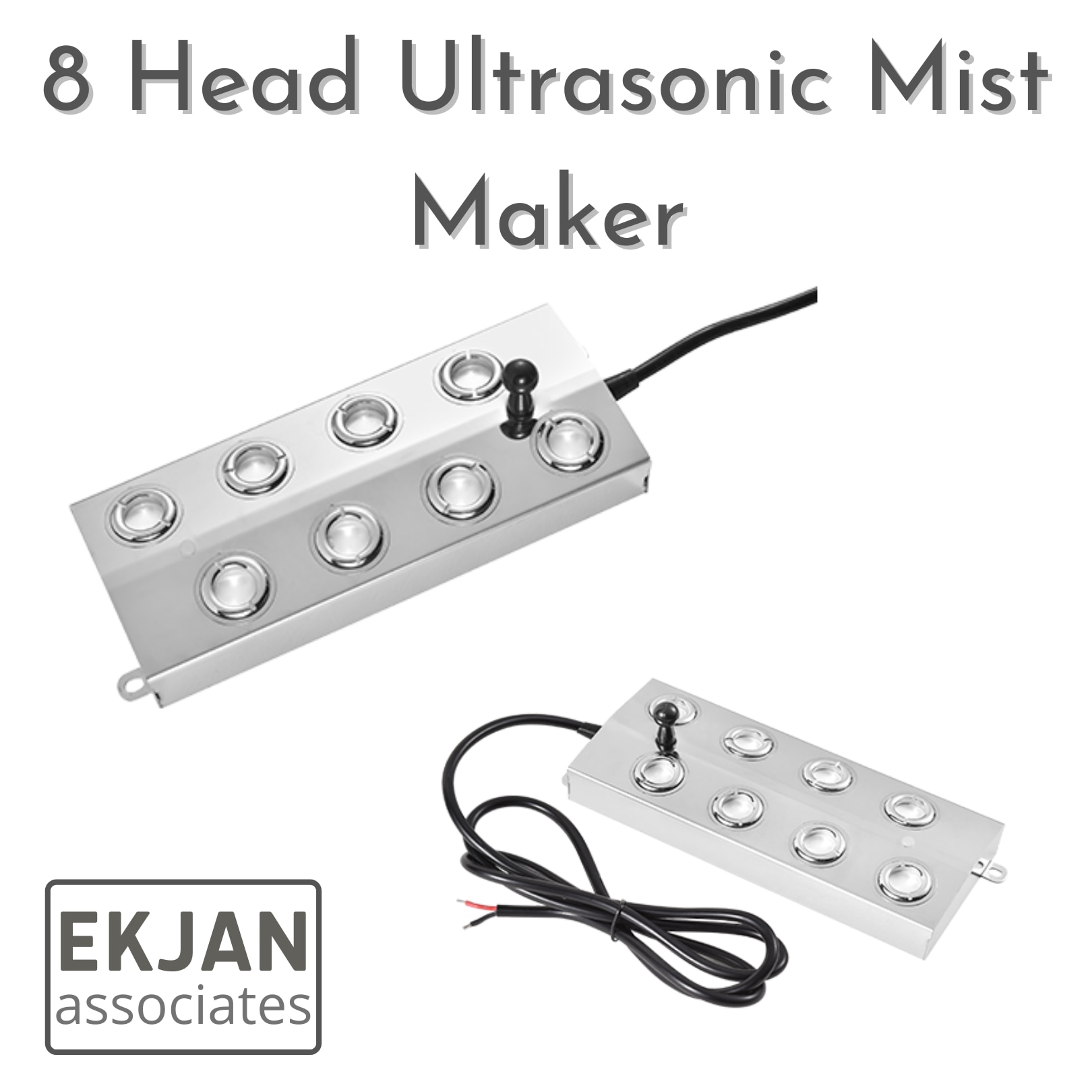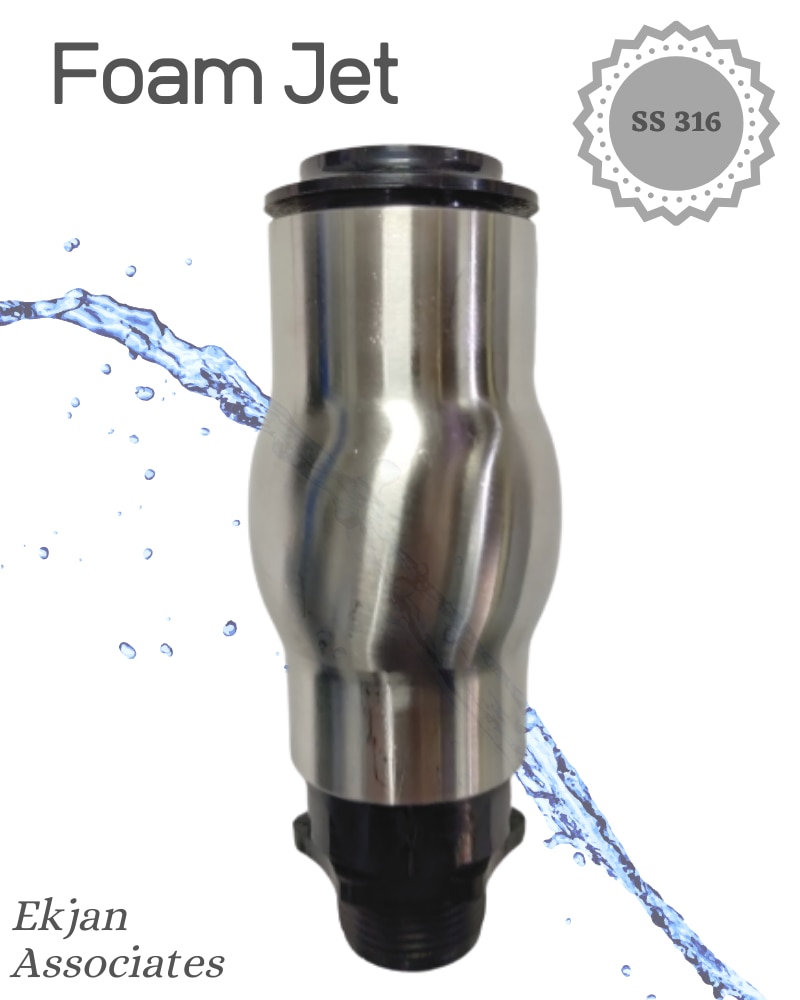Eight Head Atomizer
The ultrasonic atomizer uses electronic high-frequency oscillation (the oscillation frequency is1.7MHz or 2.4MHz, which is beyond the range of human hearing, and the electronic oscillation isn't harmful to humans and animals), through the high-frequency resonance of the ceramic atomizer, to remove the liquid water break up the molecular structure of natural flowing mist generated, without additional heat or addition of any chemicals.
High-quality material: This product uses high thermal conductivity, high corrosion resistance, high-quality 304 stainless steel; the nozzle adopts copper wafers, which has strong heat dissipation capacity and low loss; it will not rust and has a longer service life.
Protection function: Water shortage protection, when the water level is lower than the induction capacitor, the power will be automatically turned off. The built-in water temperature sensor will automatically turn off the power when the water temperature is 55°C. High safety, no need to worry about potential dangers. Very safe to use.
High-quality nozzle: The nozzle is designed independently, and the current of each nozzle is automatically adjusted electronically. When a single nozzle is damaged, other nozzles can work normally.
Widely used: 8-head ultrasonic atomizer, which can be used for stage atomization and various gardening applications, including hydroponics, breeding, greenhouse flower humidification, viewing platforms, etc.
The mist generator/fog generator uses ultrasonic electronic technology to turn water molecules into mist-like molecules, which is very suitable for use in your pond, botanical garden, rockery, fish tank, vase, swimming pool, etc. It will create a magical atmosphere, and when you use this fog generator, you will find a lot of fun.
Shell material: 304 stainless steel
Nozzle material: Copper
Working voltage: DC 42V-48V
Working Current: 4.1A-4.7A
Output power: 200W
Spray volume: 5 KG / H
Cooling method: air cooling
The best working water level: 6~7cm
Precautions for the use of eight-head atomizer
1. When using this 8-head atomizer, please select the matching transformer whose output voltage is AC36V.
2. When multiple 8-head atomizers are used in the same container, the shells of the atomizers must be connected to each other to prevent electrical corrosion of the shells.
3. This atomizer is suitable for atomizing neutral liquids (PH value 5~8). Acidic liquids will corrode the shell and atomizing film, and alkaline liquids will affect the amount of atomization, reducing the 8 atomizers and The life of the atomizer sheet, and cause the water level switch to fail and damage the atomizer.
4. Please do not damage the water level switch during the installation process, so as to avoid the failure of the water level switch and cause the atomizer to lose control. Stop using the water level switch if it is damaged, otherwise the atomizer sheet will burn dry and further damage the atomizer. At this time, it can be used after being repaired by professional maintenance personnel.
5. When the atomizer is working normally, please do not put your hands on the spray cavity of the atomizer to prevent ultrasonic damage.
6. The atomizer must be in water to work normally. Please put it in the water before turning on the power, and make sure that the surface of the atomizer is in a state of water to avoid damage to the atomizer.
7. When you stop using the atomizer, please disconnect the switch power first, and then take out the atomizer from the water.
Maintenance and maintenance of eight-head ultrasonic humidifier
In order for your product to achieve the longest service life and best use effect, please read the following carefully.
1. After the atomizer has been working for a long time, scale will be deposited on the shell and the surface of the atomizing sheet, which will seriously affect its service life and atomization volume. Therefore, it is recommended to clean the atomizer at least every half a month. When cleaning, use a soft cloth moistened with alcohol to gently wipe the surface of the atomizer shell and the atomizer sheet. Do not clean the atomizer sheet with hard objects to avoid scratching the atomizer sheet.
2. Water quality will affect the service life of the atomizer. Clean water is recommended.
3. After the atomizer has been working for a long time (about 3000 hours), the life of the atomizer will be attenuated and the amount of atomization will be reduced. At this time, you can replace the atomizer. Please contact the distributor for the atomizer and supporting tool keys. Business or our company.
The detailed description of the replacement steps is as follows:
Cut off the power, take the atomizer out of the water, and put it upside down for a while. After the water in the atomizer has all flowed out, wipe the water on the spray cavity and the inner surface of the atomizer with a dry cloth. Then use the tool spoon to unscrew the pressure ring counterclockwise, remove the old transducer, and keep the cavity of the atomized transducer dry and clean. Install the new transducer with the front face up and the reverse face down, and turn the pressure ring clockwise.
Price: 0 |
Payment Type: |
Available: False |
COD Available: False |
KYC Status: FAILED
Send Message

